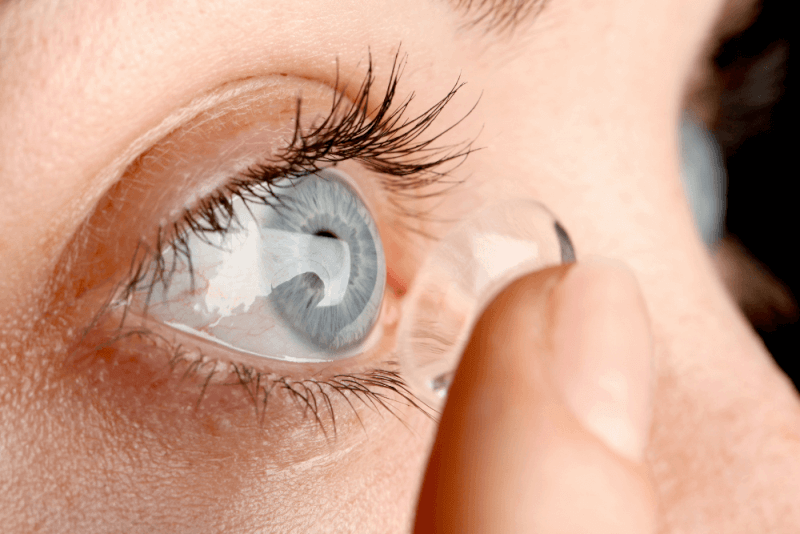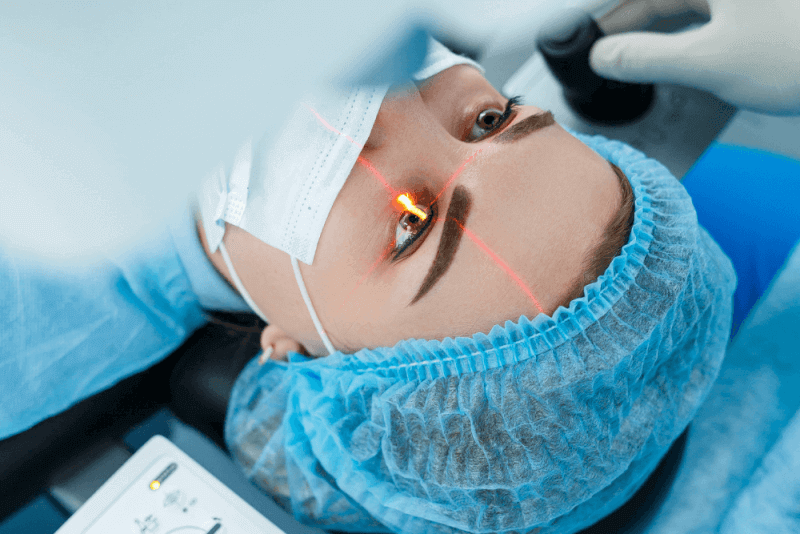What is a prosthetic eye?
Prosthetic eyes, which are applied for people who have permanently lost their visual function, ensure that the eye that has lost its health is aesthetically compatible with the healthy eye. In prosthetic eye applications, the non-functioning parts of the eye are removed and the prosthetic eye specially produced for patients is placed in these parts.
Since prosthetic eyes are produced in the desired color and specially for the patients, they increase the self-confidence of the patients. Prosthetic eyes, which do not provide any solution for vision problems, are within the scope of oculoplasty.
Who is suitable for prosthetic eyes?
The characteristics of patients who are suitable for prosthetic eye surgeries include the following.
- Complete loss of visual function of the eye
- Severe pain conditions
- Aesthetically problematic eye disturbs the patient
- The patient is not congenital
- Surgical removal of one eye
- Patients who feel depressed or depressed because they have lost their sight
- Tumor in the eye
- Injury to the eye with piercing instruments
Can a prosthetic eye see?
A prosthetic eye does not help patients to see. However, it provides the solution of aesthetic problems that arise in eyes that have completely lost their function. In this way, it is applied so that patients who have lost their organs do not worry aesthetically. This way, patients can continue their new lives in a safer way.
Prosthetic eye surgery
The aim of prosthetic eye surgery is to eliminate aesthetic concerns and to make the prosthetic eye completely similar to the healthy eye. Patients should undergo a detailed examination before the surgery is performed. Before the surgery, tumors or factors that cause excessive pain in the eye should be treated and then prosthetic eye surgery should be performed.
The healthy eye is then examined. A detailed study of the face and eyes is performed to plan the treatment. In this way, it is ensured that the prosthetic eye is fully aesthetically appropriate. The surgical method to be applied is also determined at this stage.
Methods of prosthetic eye surgery
After all the necessary examinations for prosthetic eye surgery are performed, the method to be applied in the surgery and the material from which the prosthetic eye will be made are determined.
Enucleation method
In this method, the eyeball that has lost its health is completely removed. The eye cavity is then filled with a special filling material. An orbital implant is produced according to the volume of the removed eye. In the enucleation method, the muscles and fat tissue that allow the eye to move are left. Afterwards, the surgical site is allowed to heal and in the final stage, the prosthesis is placed in the eye. By sewing the prosthetic eye to the muscles, the eye muscles allow the prosthesis to move.
Evisceration method
In the evisceration method, the eyeball is not completely removed. Instead, only tissues that have lost their function are removed. The tissues are then filled for the implant to be inserted. In this method, in which the white sheath of the eyeball remains in place, the surgical site is expected to heal for the implantation of the prosthesis.
Exanteration method
It is a method applied to patients in whom the eye and around the eye are surrounded by a tumor. In these operations, the entire tumor around the eye is removed. In addition, if deemed necessary by the surgeon, tumors around the eyeball, eyebrows, eyelids and cheeks are also removed. After removing all tissues that may jeopardize the patient's health, prosthetic eye application is performed.
Benefits of prosthetic eye surgery
Eye prosthesis surgery has many advantages for patients. These advantages include the following.
- The fact that the prosthetic eye is in complete harmony with the healthy eye ensures that the aesthetic concerns of the patients are eliminated.
- Thanks to some methods, the fact that the prosthetic eye can be moved like a healthy eye makes the difference imperceptible.
- Specially prepared eye prostheses do not cause any discomfort in patients.
- The prostheses prepared in accordance with the person provide a perfect fit to the face and eye socket.
Complications of prosthetic eye surgery
If prosthetic eye surgeries are not performed properly, some complications may occur. These complications include the following.
- Difficulties during prosthesis fitting
- Openings on the socket surface
- Implant breakthrough
- Asymmetric look
- Eyelid deformities
- Problems opening or closing the eye
- Excessive burring
- Motionless artificial appearance
- Need for correction surgeries
The healing process of the prosthetic eye
Prosthetic eye surgeries are generally not a type of surgery that causes distress to patients. For this reason, patients can be discharged a few hours after surgery. However, it is recommended that patients stay in the hospital for one day to closely monitor the surgical site and to control pain.
After surgery, the eye is tightly bandaged and the bandage remains on the eye for at least one day. After the dressing is removed, various drops and antibiotics are used. Patients are expected to feel pain for a few days after surgery. The reason for this pain is that the operated eye moves with the movement of the healthy eye.
After surgery, a one-week period is sufficient for patients to return to their daily routines. patients are advised to use protective pads during this period. This prevents infection of the surgical site.
What should be considered after getting a prosthetic eye?
After prosthetic eye surgeries, patients should meticulously fulfill their prosthetic eye care in order to prevent damage to the eyelid. It is sufficient to perform this maintenance once a month. It is recommended to follow these steps in prosthesis care.
- First of all, hands should be disinfected.
- The prosthesis is then cleaned with warm water.
- It is recommended to use baby shampoo for cleaning the prosthesis.
- After cleaning, it is sufficient to dry the prosthesis slightly.
Types of prosthetic eyes
Ready-made prosthetic eye (Fabricated prosthetic eye)
The most important advantage of ready-made prosthetic eyes made of glass or acrylic is that they are more affordable. Patients do not have to wait long because they are readily available. However, since it is not produced specifically for patients, the most suitable prosthesis should be preferred for the patient. This can cause some problems. Especially because the prosthetic eye is far from natural, it is obvious when viewed from the opposite side. In addition, since it does not support bone structure, it causes bone development to be negatively affected.
Customized prosthetic eye (removable prosthetic eye)
Prostheses specially produced for patients with silicone-based medical materials are called customized prostheses. During the preparation of these prostheses, the healthy eye is used as a guide and the following criteria are taken into consideration.
- Pupil diameter
- Iris color
- Vascular structure
- Corneal diameter and height
- Sclera color or structure
- Focusing the eye
- Eye prosthesis volume
Thanks to the consideration of these features, it is possible to produce prostheses that fully adapt to the patients. This harmony improves patient comfort.
Risk factors for prosthetic eye
The risks associated with an eye prosthesis are common with prostheses that are not tailor-made for patients. Among the undesirable conditions that may be seen in these patients are the following.
- Patients are uncomfortable with the prosthetic eye
- Burr
- Allergy
- Shorter lifetime
- Combustion
- Sinking







